Abstract
Concentrations of DDT, DDE and DDD were determined in the breast milk of Kwa-Zulu mothers residing in two different areas--with and without annual intra-domiciliary applications of DDT for the interruption of malaria transmission (exposed and control groups, respectively). While no significant change in levels with time was found in the control group, both DDT and DDE in breast milk of the exposed group increased after DDT application and this continued for three more months, after which it did not decrease appreciably. Percentage DDT increased from 42.57% (sigma DDT = 12.21 mg/kg milk fat) before spraying to 50.87% (sigma DDT = 13.79 mg/kg milk fat) following DDT application. At 6 and 9 months after the application it was 45.85% (sigma DDT = 19.49 mg/kg milk fat) and 43.27% (sigma DDT = 18.34 mg/kg milk fat), respectively. These results suggest a risk to the health of the infants in the exposed group.
Full text
PDF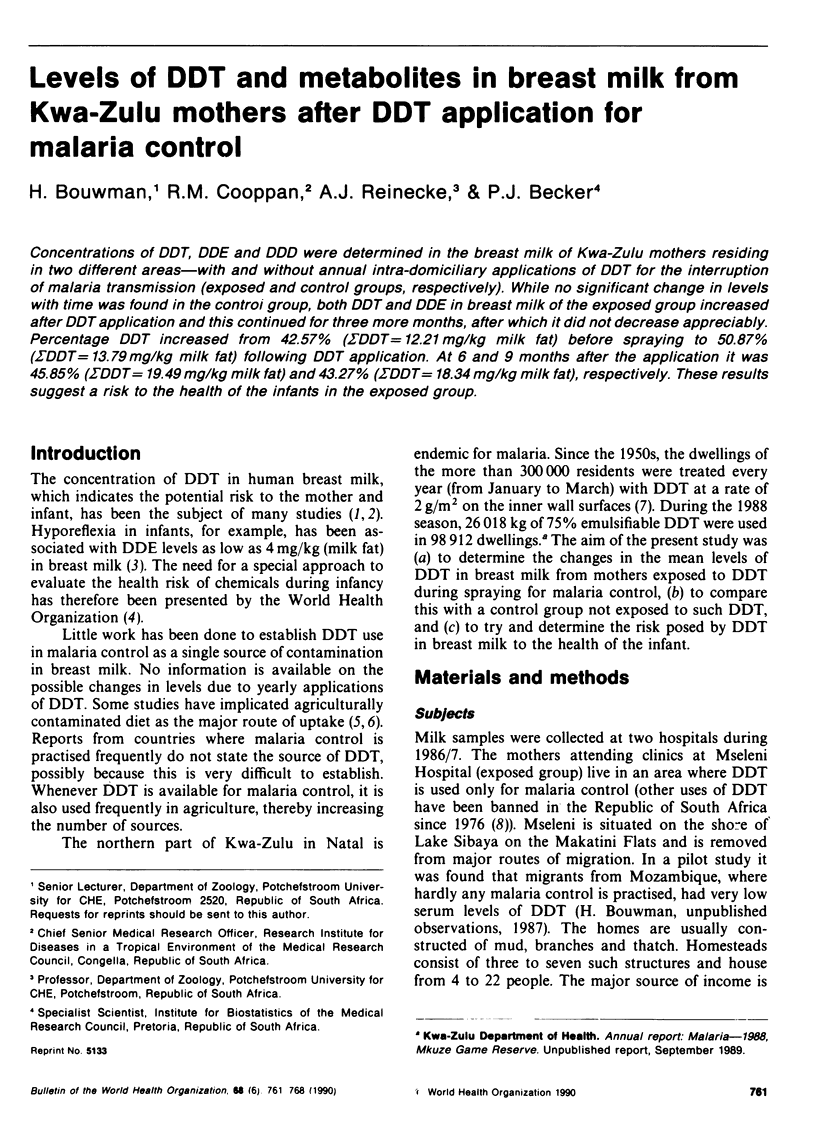


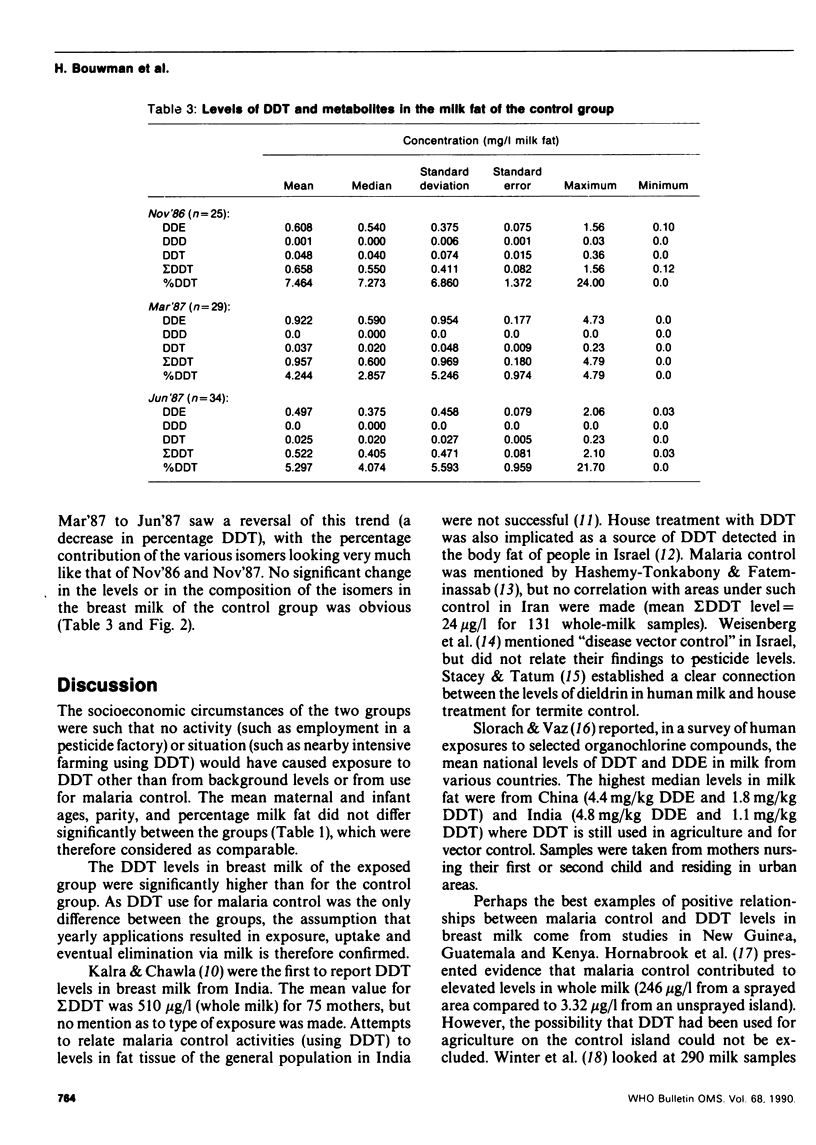
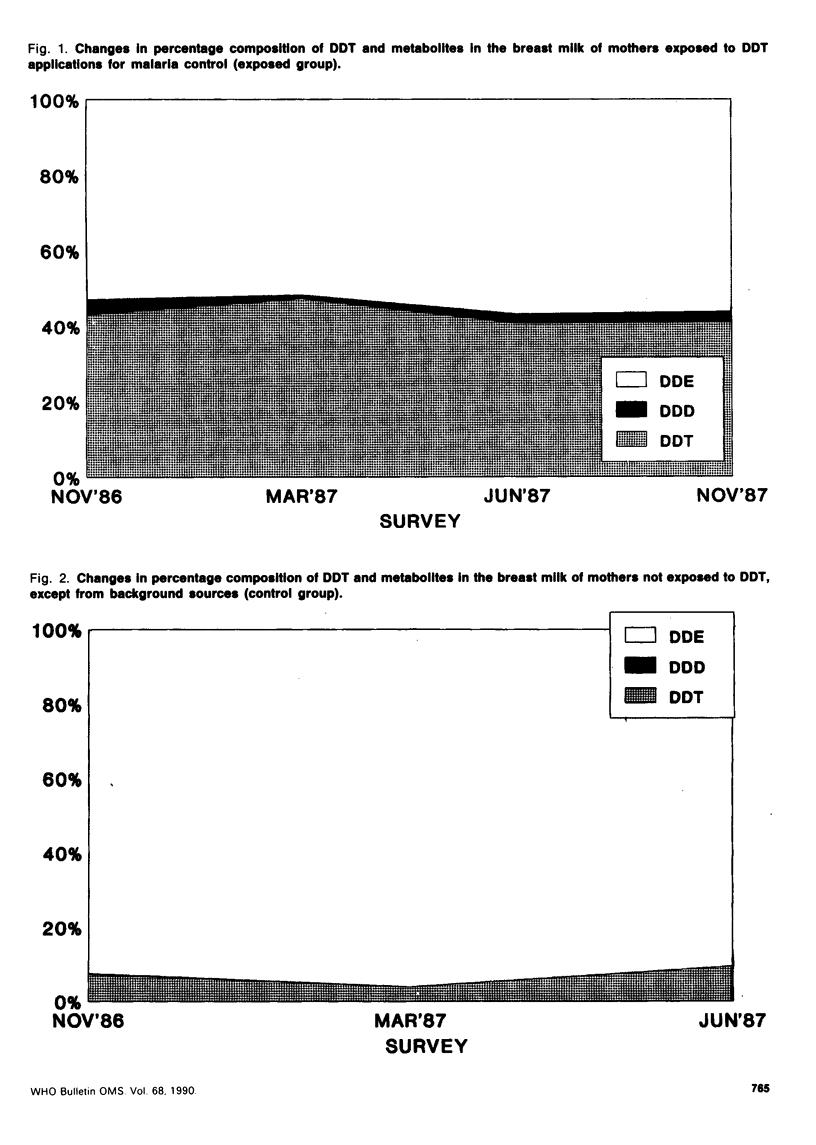
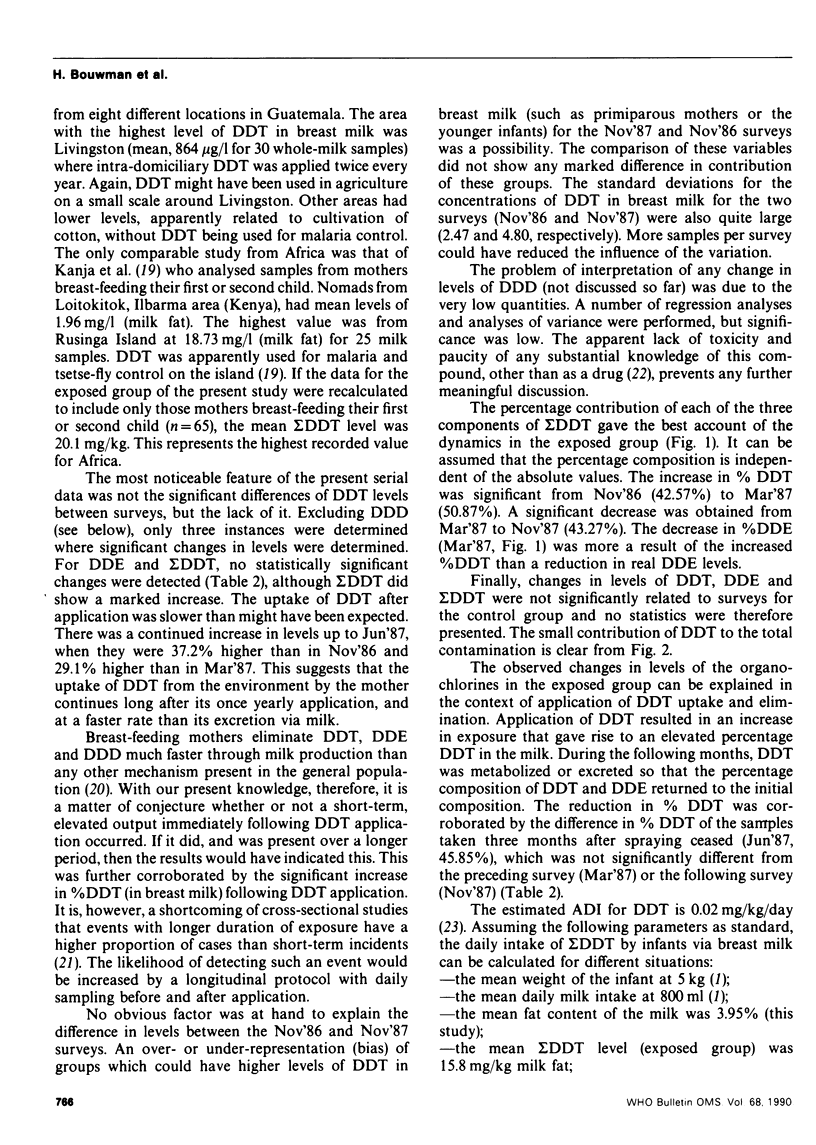
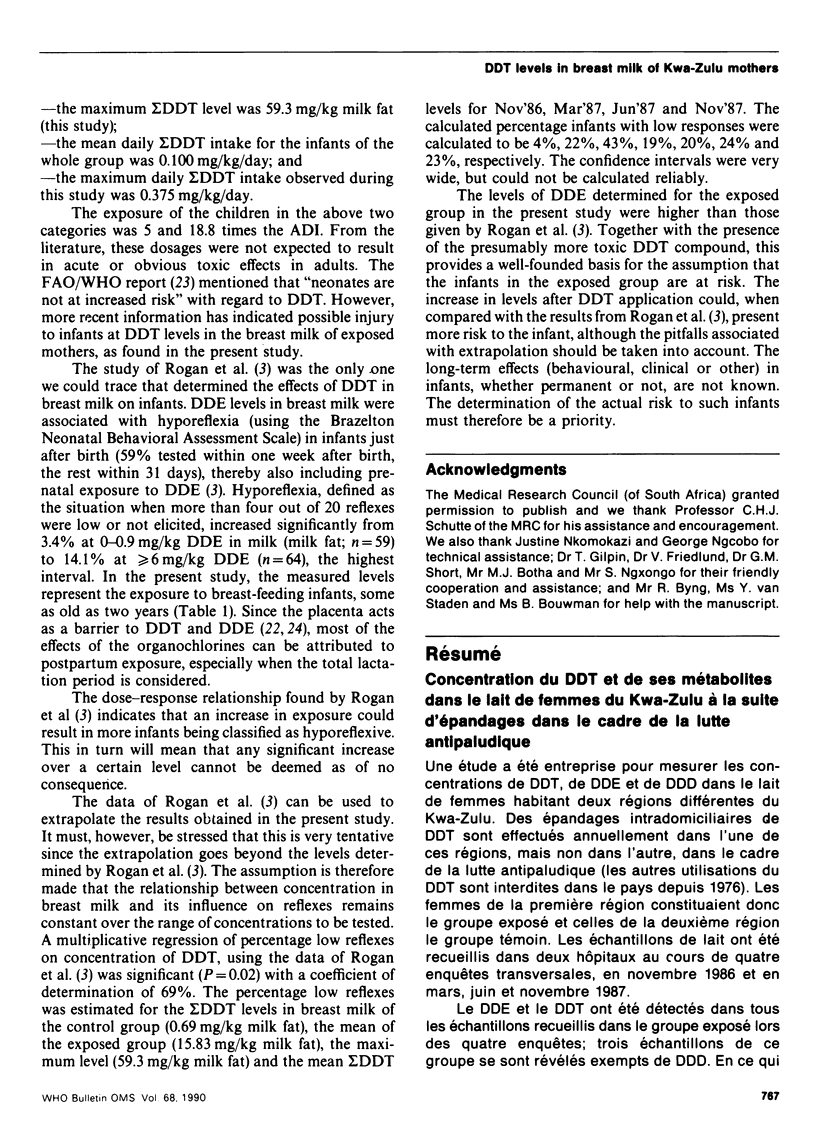
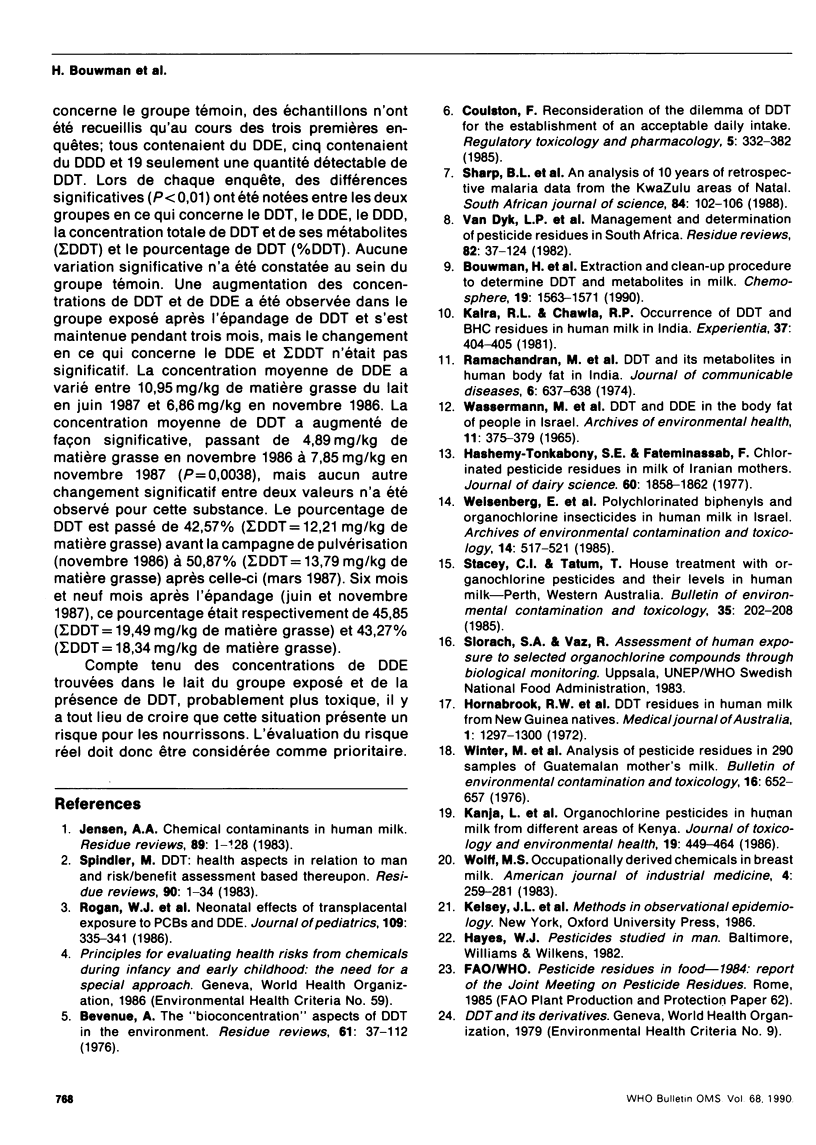
Selected References
These references are in PubMed. This may not be the complete list of references from this article.
- Bevenue A. The "bioconcentration" aspects of DDT in the environment. Residue Rev. 1976;61:37–112. doi: 10.1007/978-1-4613-9401-3_3. [DOI] [PubMed] [Google Scholar]
- Coulston F. Reconsideration of the dilemma of DDT for the establishment of an acceptable daily intake. Regul Toxicol Pharmacol. 1985 Dec;5(4):332–383. doi: 10.1016/0273-2300(85)90002-9. [DOI] [PubMed] [Google Scholar]
- Hashemy-Tonkabony S. E., Fateminassab F. Chlorinated pesticide residues in milk of Iranian nursing mothers. J Dairy Sci. 1977 Dec;60(12):1858–1860. doi: 10.3168/jds.S0022-0302(77)84114-3. [DOI] [PubMed] [Google Scholar]
- Hornabrook R. W., Dyment P. G., Gomes E. D., Wiseman J. S. DDT residues in human milk from New Guinea natives. Med J Aust. 1972 Jun 17;1(25):1297–1300. doi: 10.5694/j.1326-5377.1972.tb116496.x. [DOI] [PubMed] [Google Scholar]
- Jensen A. A. Chemical contaminants in human milk. Residue Rev. 1983;89:1–128. doi: 10.1007/978-1-4612-5601-4_1. [DOI] [PubMed] [Google Scholar]
- Kalra R. L., Chawla R. P. Occurrence of DDT and BHC residues in human milk in India. Experientia. 1981 Apr 15;37(4):404–405. doi: 10.1007/BF01959888. [DOI] [PubMed] [Google Scholar]
- Kanja L., Skåre J. U., Nafstad I., Maitai C. K., Løkken P. Organochlorine pesticides in human milk from different areas of Kenya 1983-1985. J Toxicol Environ Health. 1986;19(4):449–464. doi: 10.1080/15287398609530944. [DOI] [PubMed] [Google Scholar]
- Rogan W. J., Gladen B. C., McKinney J. D., Carreras N., Hardy P., Thullen J., Tinglestad J., Tully M. Neonatal effects of transplacental exposure to PCBs and DDE. J Pediatr. 1986 Aug;109(2):335–341. doi: 10.1016/s0022-3476(86)80397-3. [DOI] [PubMed] [Google Scholar]
- Spindler M. DDT: health aspects in relation to man and risk/benefit assessment based thereupon. Residue Rev. 1983;90:1–34. doi: 10.1007/978-1-4612-5606-9_1. [DOI] [PubMed] [Google Scholar]
- Stacey C. I., Tatum T. House treatment with organochlorine pesticides and their levels in human milk--Perth, Western Australia. Bull Environ Contam Toxicol. 1985 Aug;35(2):202–208. doi: 10.1007/BF01636499. [DOI] [PubMed] [Google Scholar]
- Van Dyk L. P., Wiese I. H., Mullen J. E. Management and determination of pesticide residues in South Africa. Residue Rev. 1982;82:37–124. doi: 10.1007/978-1-4612-5709-7_2. [DOI] [PubMed] [Google Scholar]
- WASSERMANN M., GON M., WASSERMANN D., ZELLERMAYER L. DDT AND DDE IN THE BODY FAT OF PEOPLE IN ISRAEL. Arch Environ Health. 1965 Sep;11:375–379. doi: 10.1080/00039896.1965.10664233. [DOI] [PubMed] [Google Scholar]
- Winter M., Thomas M., Wernick S., Levin S., Farvar M. T. Analysis of pesticide residues in 290 samples of Guatemalan mother's milk. Bull Environ Contam Toxicol. 1976 Dec;16(6):652–657. doi: 10.1007/BF01685569. [DOI] [PubMed] [Google Scholar]
- Wolff M. S. Occupationally derived chemicals in breast milk. Am J Ind Med. 1983;4(1-2):259–281. [PubMed] [Google Scholar]


